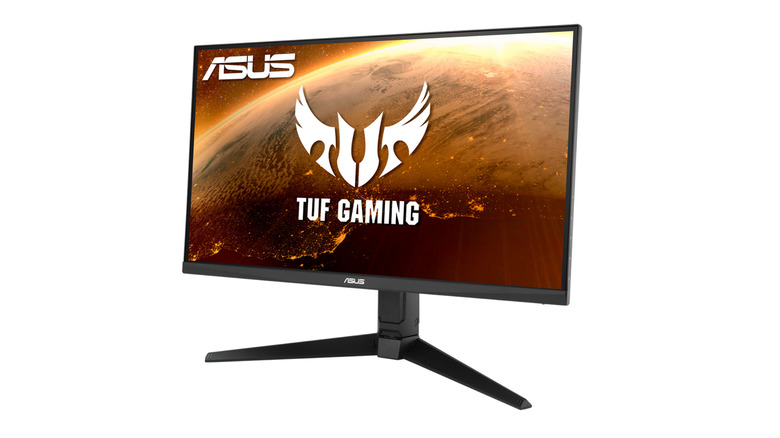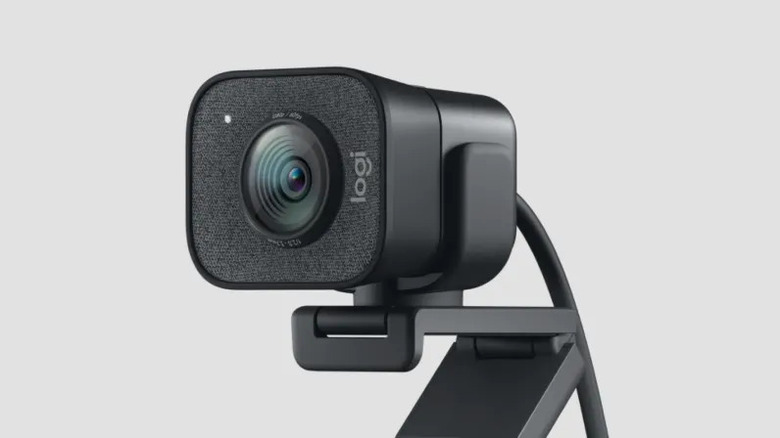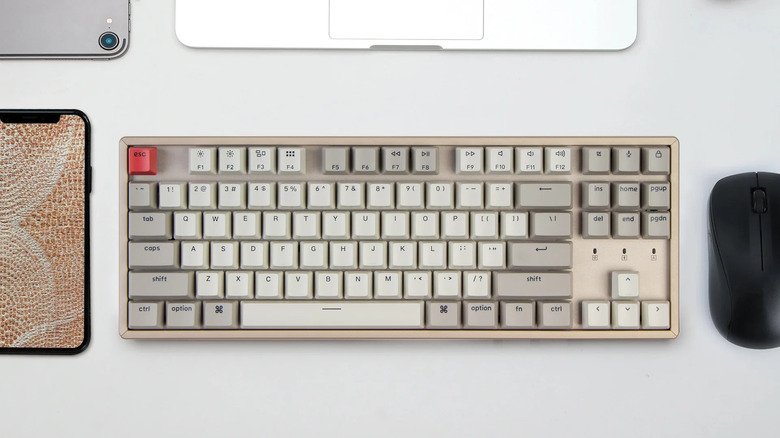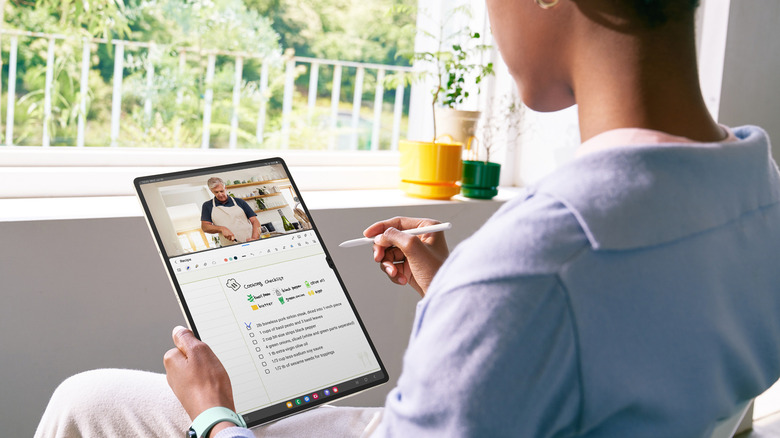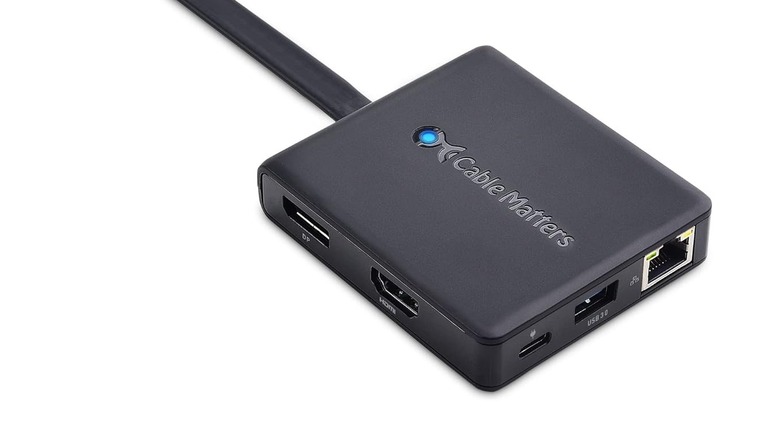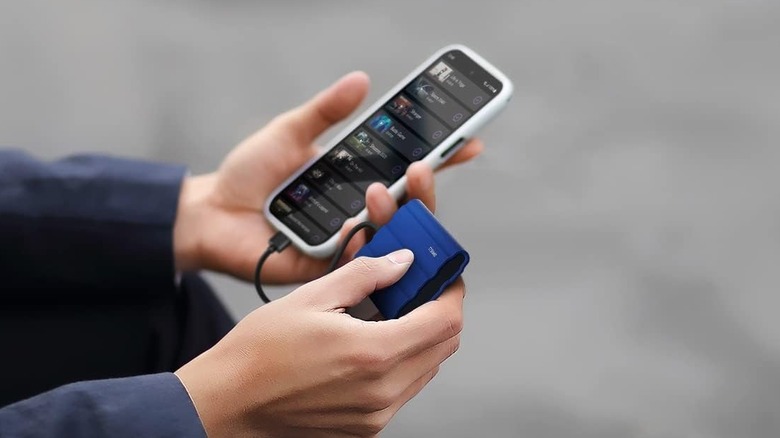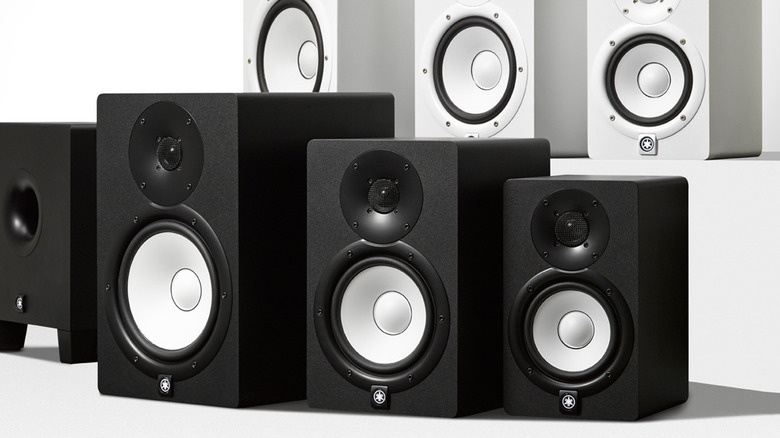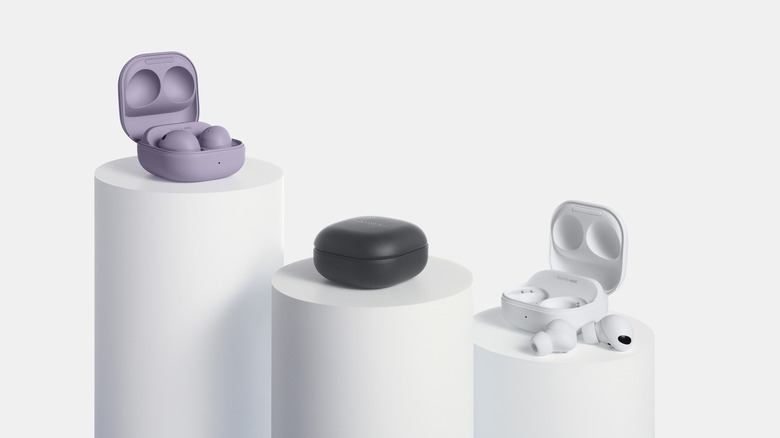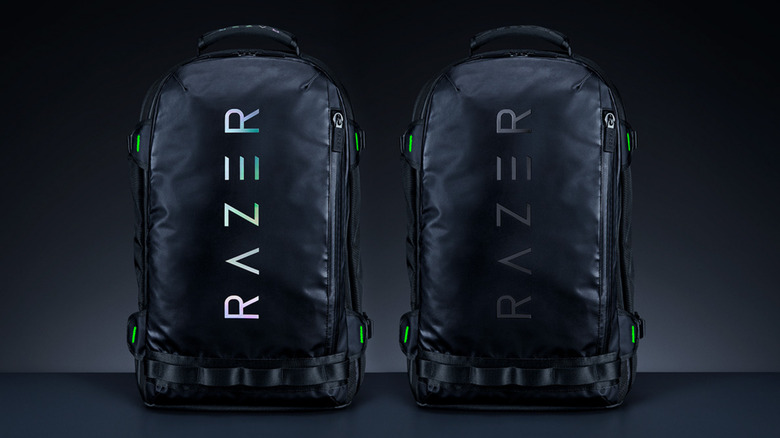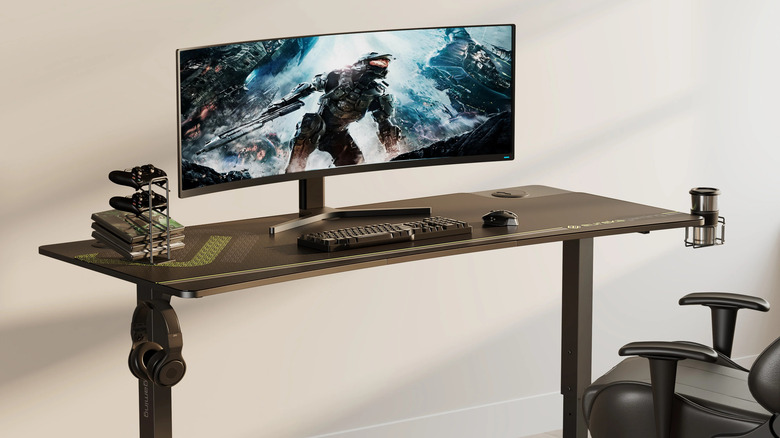10 Essential Gadgets You Need If You Work Remotely
We may receive a commission on purchases made from links.
In the past few years, more workers than ever have found themselves freed from the confines of an office. Thanks to advances in technology and internet access, remote work has surged in popularity. According to data from Gallup, 29% of U.S. employees with remote-capable jobs are working exclusively out of the office, while over half work on a hybrid arrangement. That trend doesn't look to be slowing down, as remote workers report an improvement in work-life balance, less burnout, and higher productivity.
However, working remotely is a different paradigm than office work, and according to that same data, the biggest challenge remote workers face is decreased access to resources and equipment. In other words, remote work means investing in the gadgets needed to optimize your work life. That's certainly been the case for me, and I've tested a variety of products to find gadgets that take the friction out of my workflow.
To help you be your most efficient self as you work from home, from the coffee shop, or the airport gate, here are 10 of the most essential gadgets for remote work, with the best products I've found in each category. As someone who mostly works from home but also loves to spend a couple of days each week toiling away at my favorite espresso joint, these are the gadgets I've gotten the most mileage out of.
Monitor
If you work remotely from home, you'll thank yourself later for getting a monitor. For basic work tasks, you'll want one with a relatively high resolution to make text crisp. If your job involves image or video editing, color accuracy will also make a difference. If you plan to use it for gaming as well, HDR and a high refresh rate are specs to consider. IPS monitors tend to check all those boxes with relative ease and usually have a matte screen coating to reduce glare, making them the best choice for most people.
Luckily, a good monitor can be had for cheaper than ever these days. We've got a list of 10 affordable gaming monitors to recommend. For a more specific recommendation, the ASUS TUF Gaming VG27AQL1A is worth considering. With a QHD IPS display, a decently high 170Hz refresh rate, and measuring in at 27", it's a great choice for work and gaming tasks. I've been using it as an all-around workhorse for quite some time after trying out several options and have yet to come across a situation it couldn't handle.
For my use cases with the ASUS monitor, text is crisp when writing articles like this one, and colors are vibrant yet accurate. I often prefer streaming video on this monitor to my much bigger TV. On SDR, it gets decently bright, and HDR is almost blinding unless I dial back the brightness. The contrast is great, with deep blacks and minimal banding in gradients. When it's time to relax and game, titles like "Destiny 2" and "Baldur's Gate 3" are crisp at ultra settings, and I have yet to see any tearing or other graphical issues.
Webcam
Now that you're free from the confines of the office, you'll still have to report back, most likely on a series of video calls that could have just been emails. Sure, your laptop probably already has a webcam, but it likely shoots at 720p and makes you look like something from "The Blair Witch Project." Upgrading your webcam can be a great way to literally put your best face forward as you work remotely.
You tend to get what you pay for with a webcam, so dirt-cheap models are best avoided, as they won't be noticeably better than your built-in cam. On the other hand, unless you're a content creator, you don't need to shell out for the high end. A great middle ground is the Logitech StreamCam, which shoots in 1080p at 60 frames per second. I've found it to produce a crisp and well-lit picture with direct or even oblique lighting, and the ability to shoot 60 frames per second goes a long way to make my little square box look lively in meetings. Logitech's software is nice but not something you'll need to interact with unless you want to.
The StreamCam comes with a monitor mount that stays firmly in place with rubberized pads. You have to knock it pretty hard to make it come loose. It also comes with a mini tripod to place the cam somewhere else if your monitor isn't the most convenient spot for whatever reason.
Mechanical keyboard
Your laptop's keyboard gets the job done for work on the go, but for your home office, you may want to invest in a mechanical keyboard. Typing enthusiasts prefer mechanical keyboards for their endless customizability and more satisfying typing experience.
When choosing a mechanical keyboard, you'll usually be able to pick your switches, which will determine how it feels to type on. Clicky switches like Cherry Blues and tactile switches like Cherry Browns both have a small "bump" during a keypress to let you know when you've activated a key. Linear switches have no bump, so you'll only feel the sensation of the key bottoming out, although the benefit to this is that they're quieter and won't annoy people near your workspace.
Of all the brands currently on the market, Keychron has a wide range of options at prices from budget-friendly to extravagant. Its K Series boards are reasonably priced and support both wired and Bluetooth connections. I'm writing this from a Keychron K8 with Brown switches, and, as someone who writes for a living, I will never go back to mushy, shallow laptop keyboards. Clickity clackity click. That's how much I love typing on this thing. Click clack. Et cetera.
Tablet
As the middle ground between a phone and a PC, a tablet can be a great addition to a remote work setup, as it can be perfect for using as a second screen, taking notes, or receiving video calls. The choice for people who already use a Mac or iPhone is obvious. The 2022 iPad Pro is Apple's best tablet, with a beautiful Liquid Retina XDR display, a USB-C port, Apple Pencil support, and Apple's lauded desktop-class M2 processor.
Those already using a Windows PC or Android phone should consider the Samsung Galaxy Tab S9 Ultra, with its mammoth 14.6" Dynamic AMOLED display powered by Qualcomm's Snapdragon 8 Gen 2 processor. For peripherals, there's a USB-C port, and the S-Pen stylus is included in the box. I was hesitant to take on a tablet this large, but unless I hold it next to a friend's iPad, it feels far smaller than it should, mostly due to how slim it is. With the keyboard cover I bought alongside it, the Tab S9 Ultra is my primary mobile workstation thanks to One UI's multitasking capabilities that let me put three apps side-by-side with many more in window view.
Either tablet is nearly capable of replacing a laptop, especially if you grab one of the keyboard cases sold alongside them. Either can also double as a wireless second display for your main computer. Plug them into an external monitor, and you've got a tablet-only dual-screen setup. The Tab S9 goes the extra mile here — either on its screen or a second one, you can activate Samsung DeX to get a Windows-like desktop interface for Android.
USB-C adapter
As powerful laptops grow slimmer, the ports they offer dwindle. Outside of gaming laptops, most modern clamshells offer only a couple of USB-C ports and, if you're lucky, a USB-A slot. For those living the tablet life, you're limited to a single USB-C port. If you need to connect more accessories, you'll have to grab an I/O hub.
One great option is the Cable Matters 7-in-1 USB-C Hub, which offers 4K, 60Hz DisplayPort, and HDMI connectivity, along with two USB 3.0 ports, a USB-C port with 100W power passthrough, an ethernet port, and even a VGA connector. The dongle cable is 5" long, which is just enough to keep the hub itself out of the way, and an LED on top lets me know it's connected. The whole unit fits in the palm of the hand and comes with a rubberized case that houses a slot to tuck in the connector cable. I've got more than a few dongles and hubs lying around, but this is the hub that always stays in my backpack.
Portable SSD
Even if you can fit all your work on your computer's built-in storage, it's always a good idea to back it up to an external drive. Many people tend to think backups are only necessary in a worst-case scenario, like dropping your laptop in the pool. However, you could always accidentally delete something or make a vital mistake like saving over an important report. With flash storage so cheap these days, you'll want a portable SSD to make sure you never lose important data.
The best portable SSD is the Samsung T7 Shield, which comes in 1TB, 2TB, and 4TB variants, starting at just under $100. It has water and dust resistance and is shock absorbent to survive drops. Data transfer speeds are fast over the USB 3.2 connection. Another great option is the SanDisk Extreme Pro Portable SSD V2, which comes in the same size configurations. I've always got one of the two in my bag.
Desktop or Bluetooth speakers
If you live alone, speakers can be a must-have for Zoom calls or just to keep some background music while you work. Unlike earbuds, which can get uncomfortable when worn for long periods, speakers can provide better and more immersive sound. If you're working from the same desk every day, bookshelf speakers are the best bet. If you want to move your sound around with you, pick up a Bluetooth speaker.
My pick for bookshelf-style speakers are the Yamaha Hs5 monitors, which are sold individually and run about $400 for a pair. For that price, you're getting precisely tuned sound that can get incredibly loud without losing clarity, along with an unmatched long-lasting build quality. I've been rocking mine since 2019. They've been with me through multiple moves, yet they look and sound every bit as good as the day I bought them.
The wide soundstage and flat EQ on these bi-amplified monitors are a treat and the main reason they're legendary in the pro audio community. The distorted piano loops on Run the Jewels' "Ooh LA LA" are wide, while vocals are clear and punchy. On Moderat's airy "NUMB BELL," pulsing synths, layers of bass, and distorted vocals toward the back of the mix fill out space without muddying.
If you opt for a Bluetooth speaker, the Ultimate Ears Boom 3 is hard to beat. One unit gives off an omnidirectional sound that isn't bad and gets very loud, and multiple Boom units can be paired up wirelessly for a stereo experience.
Earbuds or headphones
If you live with others and don't want to subject them to your Zoom meetings or background music, you'll need a good pair of Bluetooth earbuds or headphones. If you're a Mac or iPhone user, the obvious choice will be the Apple AirPods Pro 2nd Generation, which fit into Apple's ecosystem and now have the added convenience of a USB-C port on the case.
If you use a Windows PC or Android phone, however, Samsung's Galaxy Buds2 Pro can't be beaten for sound quality at their price point. The Galaxy Wear app available from the Play Store controls the feature set, and Samsung also has a Windows companion app that can be downloaded from the Microsoft Store. Standout features include the intuitive tap controls and the fact that the earbuds will automatically switch to transparency mode when you take a phone call so you can hear yourself talk.
It's rare to come across earbuds that sound this good out of the box. Instruments are well separated, the bass is rich without overpowering the midrange, and the soundstage is surprisingly wide. My one gripe is how the quality of the ANC seems to fluctuate with each software update.
If you'd rather go with full-size headphones, Sony's WH-1000XM5 is a great-sounding pair of over-ears with active noise cancellation that's often considered best-in-class. Sony has implemented some neat features, like the ability to put a hand over one earcup to temporarily activate transparent mode. SlashGear found the sound to be very accurate but not perfect. The price tag on these cans will also be enough to make some shy away.
Backpack
If you're working portably from coffee shops or other places outside your home, you'll need a backpack to house your gear. There's a lot to consider when it comes to picking the right bag. How big is your laptop? How many peripherals will you need on hand? How comfortable is it to walk with?
I've tested more backpacks than I care to admit, and two options have stood out to me for their quality, organizational ease of use, and comfort. For most people, the Timbuk2 Q 2.0 is a great choice that fits all but the largest laptops, with plenty of room left over for a tablet, notebooks, or document folders. A medium-sized pouch at the base of the bag is perfect for storing your chargers, and the tiny, padded pouch at the top can hold a pair of glasses or — in my case — wireless earbuds. I've also found it quite comfortable on days when I decide to walk to my work spot of choice.
When I want to bring my gaming rig on the go, the Timbuk2 can't quite fit my hulking, 17.5" gaming laptop, so I found a great option in the Razer Rogue 17 v3 backpack. Here's an incomplete list of what I usually pack in the Rogue: that massive laptop, its comically large charger, my 14.6" tablet, a Native Instruments audio interface, full-sized mixing headphones, a PS5 controller, a stage microphone, XLR cables, USB cables, a phone charging brick, a USB hub, two portable SSDs, a gaming mouse, two Moleskine notebooks, five pens, a fleece jacket, and my water bottle.
Desk
You've loaded up on work-from-home gadgets, but now you need something better than your coffee table or kitchen counter to work on. A good desk will not only help you organize your remote workstation but can be essential for ergonomics to avoid health problems down the road.
Sit-to-stand desks are all the rage right now, and SlashGear found a nearly perfect one in the Secretlab MAGNUS Pro. However, if the $799 price tag on that premium desk is hard to swallow, the Eureka Ergonomic 63" Manual Height Adjustable Gaming Desk is a great option at just under $340. It lacks the ability to automatically move up and down with the push of a button, so I've left it at the height most convenient for me — the lowest setting because I am a tiny little guy.
The upside is that it's impressively sturdy, without any flex to its top deck. It also has convenient cable management channels that help tame the Kraken-like tentacles emerging from my PC and peripherals, along with a cup holder and headphone dock. The giant mouse pad that covers the entire surface is also convenient.

